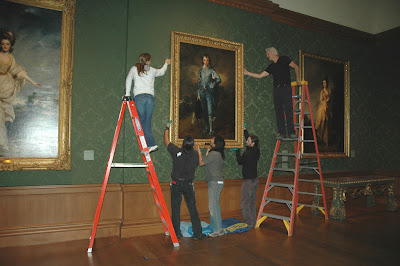With Our Backs to the World, We Bow: The Hermeneutics of
Solitude
Hermeneutics / a brick is a brick is a brick / proscenium
stage / break the fourth wall / smash it with a brick / now you’re inside
Plato’s cave staring down at the brick / when dinosaurs ruled the Earth / for
40 days and 40 nights / just like Elvis / or Agnes Martin with her back to the
world / disbelief suspended / now we worship the oval / the dinosaurs bring us
ovals / there is no brick only oval / no cave only sky / dinosaurs can fly / fly
away / fly away / heretic she holds the brick to her breast / the brick is her
child / she loves the little brick monkey / oval meet brick / brick meet oval /
an oval is an oval is an oval / when humans ruled the Earth / for 40 days and
40 nights / or never / the universe is on wheels / everything is motion / gone
before we even began / but maybe we could fly / a bird is a bird is a bird / a
simple pine box / long live the Sphinx / three ages of man / four ages of man /
seven ages of man / I’ll see your seven raise you a thousand / theatre in the
round / spin the knife / just one bullet / odds in your favor / mostly / until
they’re not / six chambers of man / like I said hermeneutics / the brick spins
through the air / its trajectory predetermined / the oval impassive / she
cradles the brick / they spin together / gravity / you look up at the moon /
shadows all around / wait for day / dream about your father / he smiles but he
doesn’t know he’s just a dream / it’s better that way you think / better not to
step outside the cave / one more curtain call / just one / I promise I’ll be
good / see the dinosaurs like us / we get on so well / with our backs to the
world / we bow















